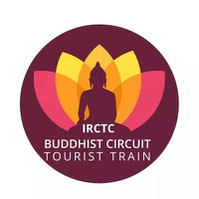THE FOUR MAJOR BUDDHIST TRADITIONS IN LADAKH

The GELUG-PA tradition was founded by the great Acarya Je Tsongkhapa (1357-1419) as one of the so-called "New Transmission" schools with a focus on doctrinal education and monastic dsicipline, enforcing celibacy and abstinence. This order discouraged tantric sexual yoga that the other schools practiced and had tantric teachings modified so they could fit the purist framework. A Gelug-pa monk could enter tantric practice only after he became a Geshe (highest degree in monastic education), which required twenty years of study. Gelug-pa doctrine has the Madhyamika philosophy (Middle Way) as its basis and sees Mahamudra (Absolute seal, absolute reality) as the summum bonum of tantric pactice.

The Gelug-pa order is the most dominant school of Tibetan Buddhism in the Himalayan regions. Spituk, Likir, Thiksey, Rizong, Karsha, Diskit, Stongdey are among other major Gelug-pa monasteries in Ladakh.

The KAGYU-PA order was founded by Gampopa (1079-1153) who was the great disciple of the famous hermit-poet Milarepa (also Milaraspa, 1040-1123) in the 12th Century. Kagyu means "Oral Lineage" or "Whispered Transmission" beginning with the Indian guru Tilopa (988-1069), who is considered to have received teachings directly from Vajradhara, the ultimate Buddha in Mahayana. Tilopa taught Naropa, a Kashiri scholar and yogi, who in turn passed on the teachings to Marpa when he spent many years in India. From Marpa to Milarepa to Gampopa the lineage was unbroken but the order thereafter split into several fractions. Three other disciples of Gampopa also founded a sub-sect each, one of which further split into several sub-sects. Among them the Drukpa and Drikung schools are prominent and they have a major presence in Ladakh.
A major teaching of Kagyu-pa is the "SIX YOGAS OF NAROPA", in which a fire is envisioned in the stomach that cleans and purifies the sublte body burning away all notions of ego so that it becomes an immaculate vessel fit to fully receive teh yidam and become inseparable from him. Practising the Six Yoags of Naropa, Kagyu-pa practioners seek enlightenment through the high tantric teaching of Mahamudra that involves intense meditation without the aid of yidam.

Drikung Kagyu: this sub-sect was founded by Skyobpa Jigtsen Gonpo (1143-1217) and known for developing the meditation technique of Phowa in which the practitioner learns to emit his consciousness through a gap in the skull at the moment of death to enable enlightenment in the Bardo, the intermediate state between death and rebirth. Achi Choskyi Donma is the protector fo the Drikung Kagyu sub-sect.
Major monasteries of Ladakh, like Lamayuru, Phyang, Shachukul belong to this order.

Drukpa Kagyu: this sub-sect of the Kagyu order was founded by Tsangpa Gyare (1161-1211) who was a disciple of Phagmo Drukpa (1110-1170). Once Tsanpa Gyare saw six dragons fly out in the sky and influenced by this holy sight he named the new sub-sect Druk which means dragon.
In Ladakh, in the 17th Century, under the influence of the famous Drukpa high lama Stagtsang Raspa, the great Ladakhi king Sengge Namgyal accorded royal patronage to this order. Thus, major monasteries of Ladakh, such as Hemis, Chemde, Shey and Stakna in Central Ladakh, as well as Sani, Bardan, and Dzongkhul in Zanskar belong to the Drukpa Kagyu order.

NYINGMA-PA: this is the oldest tradition of Buddhism in Tibet which emphasizes spirituality and meditation over scholarly learning. In Nyingma-pa, Padmasambhava or the Guru Rinpoche is considered as a second Buddha. His images are enshrined in the monasteries. Nyingma-pa practioners believe that Guru Rinpoche meditated in several caves across the Himalayan region and got victory over evil spirits. He and his spiritual consort Yeshe Tsogyal are considered to have hidden many sacred texts called "TERMAS" for future generations. These would be relevant in future, especially at the time of danger to Buddhism.
Nyingma-pa practioners try to achieve alignment with the ultimate reality through the practice of the Highest Yoga tantra called Dzogchen. Marginalized by the laterreformist schools of Kaguy-pa and Gelug-pa, Nyingma-pa today has adherents mainly in the isolated Himlayan regions. In Ladakh, Thak-Thok in the village of Sakti is the only Nyingma-pa monastery.

SAKYA-PA: this sect was founded by Sachen Kunga Nyingpo (1092-1154). He took the teaching of Lamdras (Path and Result) frm Khon Konchok Gyalpo (1034-1102) who was a disciple of Dogmi Lotsava (990-1074). The school was named after a white (brown) land of a village of South-Central Tibet where Khon Konchok Gyalpo founded the first monastery of this sect in 1072. The Sakya-pa sect was very powerful during the 13th and early 14th Century in Tibet. After getting training in monasticism, Sakya-pa monks practice the higher mystical tantras based on the principle of the Lamdras teaching, which was formulated by Virupa, an Indian Buddhist scholar. Hevajra has got a principle position as deity in the Sakya-pa monasteries.
In Ladakh, Matho is the only monastery belonging to the Sakya-pa order.
See the complete list of all Monuments in the State of Jammu & Kashmir:

has put the following sites in Ladakh on its List of Ancient Monuments:
- Sculpture at Drass
- Rock Cut Sculpture at Mulbekh
- Lamayuru Monastery
- Likir Monastery
- Alchi Monastery
- Phyang Monastery
- Hemis Monastery
- Leh Palace
- Namgyal Tsemo Gompa
- Tiserru Chorten
- Shey Palace
- Thiksey Monastery













































